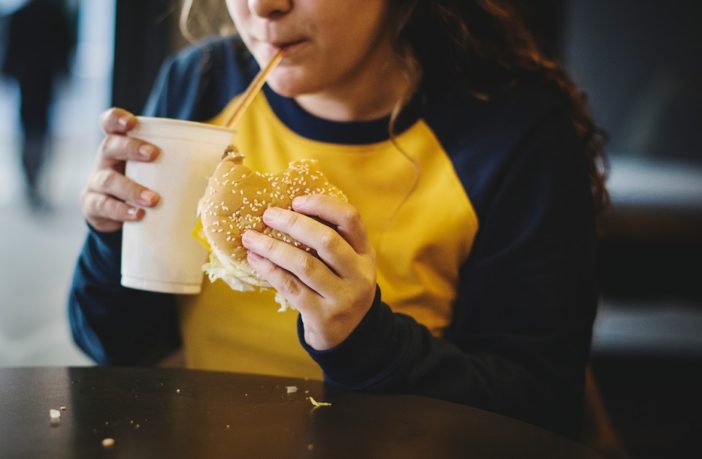The UK government recently announced its plans for a new package of measures, which it hopes will help the nation lose weight. But, with the worst childhood obesity in Europe, is it enough to help the younger generation live a healthier future? Dr Mimi Tatlow-Golden, Lecturer in Developmental Psychology and Childhood at The Open University and Co-Director of the OU’s Centre for Children and Young People’s Wellbeing, shares her thoughts on the ‘Better Health‘ campaign.

Dr Mimi Tatlow-Golden
I have been working with government and non-government bodies in the UK and across Europe, North America, Asia and Latin America for a decade campaigning for changes in policy to stop food marketing to children and young people.
People often think food marketing isn’t that important because we can just ‘make healthier choices’, but it really isn’t that easy. Food corporations spend billions on marketing because it works on us and our children emotionally and pervasively. It sets deep social norms and expectations from our earliest years – even from preschool – about what kinds of foods are tasty, exciting and fun, and how we use food to celebrate, share and show love to one another. It’s so effective that my research has found children recognise food logos before they know their ABCs. In their teens, marketers then link brands to young people’s new-found freedoms and interests via social media, humour and entertainment and recruit young people to distribute marketing content – by encouraging them to post, like and share.
The new UK government guidelines plan to tackle marketing in digital media, which is a potentially radical and much needed step. I welcome these changes, but there are crucial unanswered questions that suggest we have a long way to go.
First – why are we waiting? The restrictions are due to come in 2022. The government has been consulting on this for years. The time for waiting should be over and there’s no benefit to children by delaying.
Second – what kinds of advertising are in scope? The wording of the government announcement doesn’t make this clear. What about all the under-the-radar approaches in social media? – sponsored posts by celebrities on Instagram, YouTubers dropping in a mention of their favourite biscuit, drink, chocolate or crisps brand. This “brand activation” market is three times the size of the formal, paid-for-advertising market.
Third – what will be defined as ‘unhealthy food’? Current UK regulations allow brands to market ‘healthier’ options such as artificially sweetened soft drinks and fast food meals with vegetables or fruit instead of chips (an option rarely availed of!). Yet the World Health Organization doesn’t recommend allowing marketing to kids for artificially sweetened drinks. With the UK’s sugar tax in 2018, almost all companies replaced much of the sugar content in their products with artificial sweeteners; but this teaches children’s taste buds to expect drinks to be sweet and it may also be damaging to health, especially for children and adolescents. Looking at past experience, the form of the regulations means we’ll still be surrounded by marketing for highly processed foods, just with the recipe tweaked so they sneak in under the guidelines.
Fourth – what happens when marketers aim for so-called healthier options? In early 2020, I contributed to a paper investigating the response of teens to unhealthy, healthy and non-food related advertising. We measured teens’ attention (tracking how often and for how long they looked at ads), memory (their free recall and prompted recognition) and social responses (would they ‘share’ this post? How did they view peers who did?). The findings showed that teens respond most strongly to unhealthy food marketing. It appeals to their independent identities and social lives with friends. Just changing the recipe isn’t going to be enough, we need to change our food system.
Our unhealthy food cycle can only be broken by creating a whole new healthy food system, which feeds the body and brain. Importantly, it also needs to be sustainable and feed the earth. The systems we have at present – from agriculture to advertising – are deeply dysfunctional. Ultimately, actions need to be put in place with greater speed and force, so that we can start seeing some demonstrable results and our children can flourish.
Find out more
With the OU’s OpenLearn’s free course, Children and young people: food and food marketing
About studying Education, Childhood and Youth and Psychology at the OU



